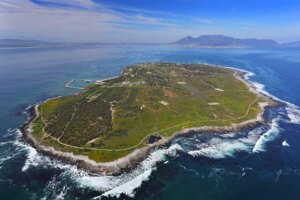I’ve just come across another great outing to add to the what to do in the Johannesburg section of my blog. What I’m talking about is the Hartebeesthoek Radio Astronomy Observatory (HartRAO), which is located in the Magaliesberg, approximately an hour from Johannesburg. It is one of the more obscure places around. You won’t find it advertised anywhere, but it’s a real gem for families with kids or anyone interested in science. It is open for public visits once a month.
Tours of HartRAO
The tours at HartRAO are actually run by an on-site scientist, not just a tour guide. The woman guiding our group was incredibly knowledgeable and equally enthusiastic with the kids. Even though none of our kids actually wanted to go, we could hardly corral them back into the car at the end. I can highly recommend a visit if your kids are interested in science, or, perhaps, especially if they are not. They might discover a spark of interest there. We were treated to so many hands-on activities that even the more restless kids stayed focused.
We got to:
- Shoot water rockets into the air.
- Spin faster and slower depending on how your weight is distributed,
- Tell time using a sundial.
- Power a light bulb by capturing radio waves from the atmosphere.
- Typical for Africa, a beautiful sunset was thrown into the bargain.
Giant CPUs and blinking lights
We also carried around moon and planet replicas to get a better understanding of the various distances from the sun, and then we learned about Red Giants and White Dwarfs (or was it White Giants and Red Dwarfs? – sorry, I don’t seem to pay the best attention during those lectures) and Black Holes – yep, the holes were definitely black, although I still have no clue what they actually are. We can neither see nor feel nor even replicate them, yet they are somehow there. I actually majored in physics back in high school (Physik/Mathe Leistungskurs) but nuclear physics was not my forte.
Anyway – what I thought was the coolest thing at HartRAO was the control room from which the radio telescope is programmed and steered. It reminded me of the early day computer centers with their giant CPUs and blinking lights, and one could almost hear “Houston, we’ve got a problem” wafting through the room, it had such a space mission look (a bit of a dated space mission – after all, the machinery has been on loan from NASA for a very long while!).
History of HartRAO
Speaking of NASA, the observatory was built by NASA in 1961 as part of the Deep Space Network, with the purpose of tracking unmanned US space probes. Its history makes for some very interesting reading, even if you don’t have the time or opportunity to visit. The telescope itself is 26 meters in diameter, looking very impressive. Larger ones have been built since then, but this one is the only one on the African continent, giving it quite a bit of strategic importance. It is not only used to provide valuable measurements for the research of space and astronomy, it is also linked to other radio telescopes around the world to form a virtual telescope the size of the Earth.
All in all a very informative afternoon, and a great way to get your kids exposed to and hopefully interested in science.
HartRAO Contact Info
Phone: 012 301 3100 (call or email ahead for reservations as space is limited)
Email: [email protected]
Web: www.hartrao.ac.za (with links to great information and general facts)
- Public viewing one Saturday each month from 16:00 to 20:00 (view schedule)
- Cost: R45 per adult, R35 per learner (or a maximum R120 per family)
- Teacher workshops and school group visits available upon request
Sundial photo: courtesy of Jacky du Plessis. All other photos: Sine Thieme.




